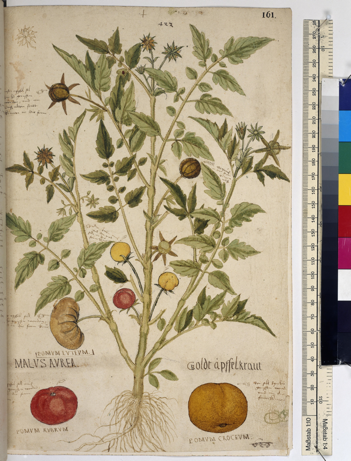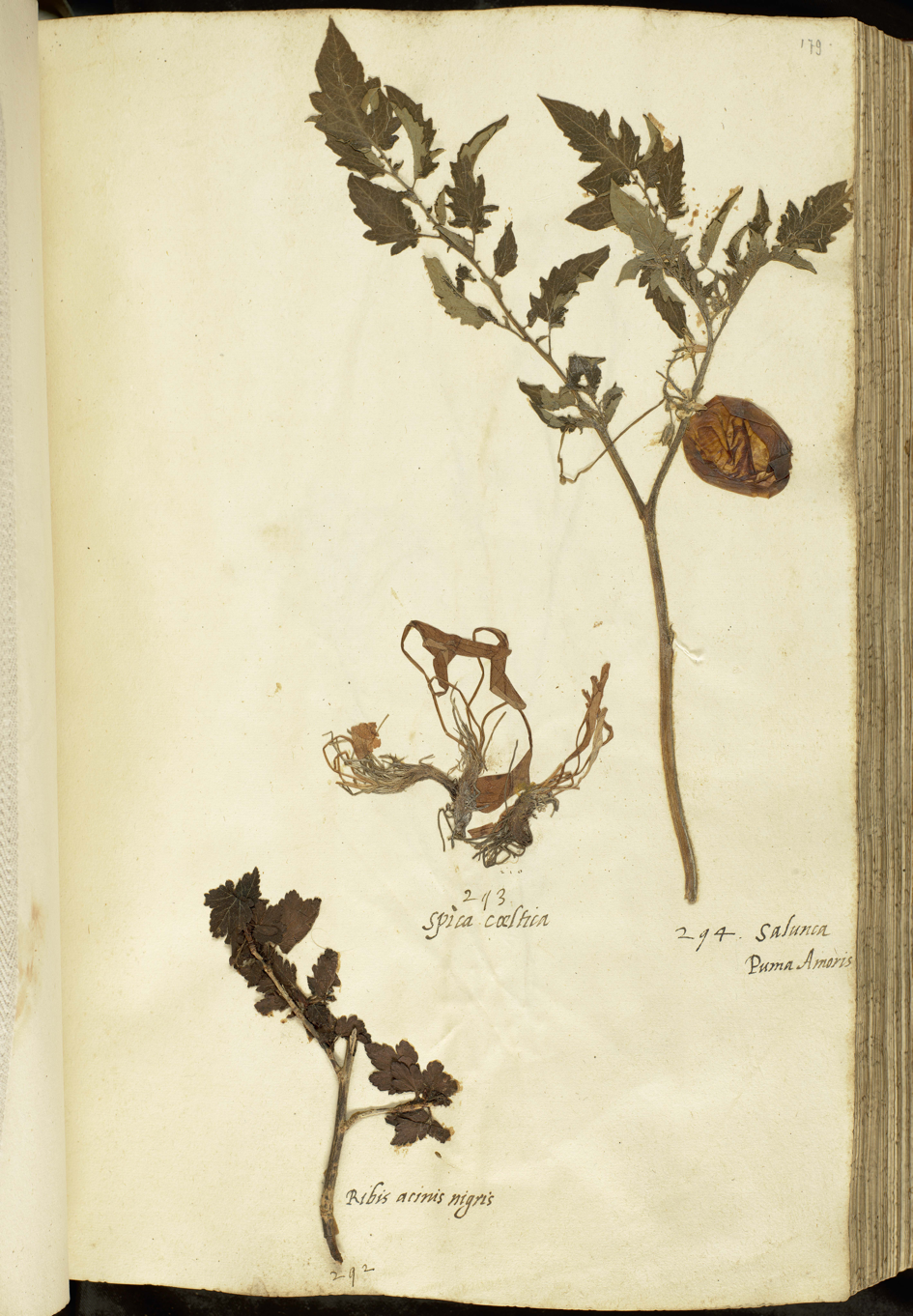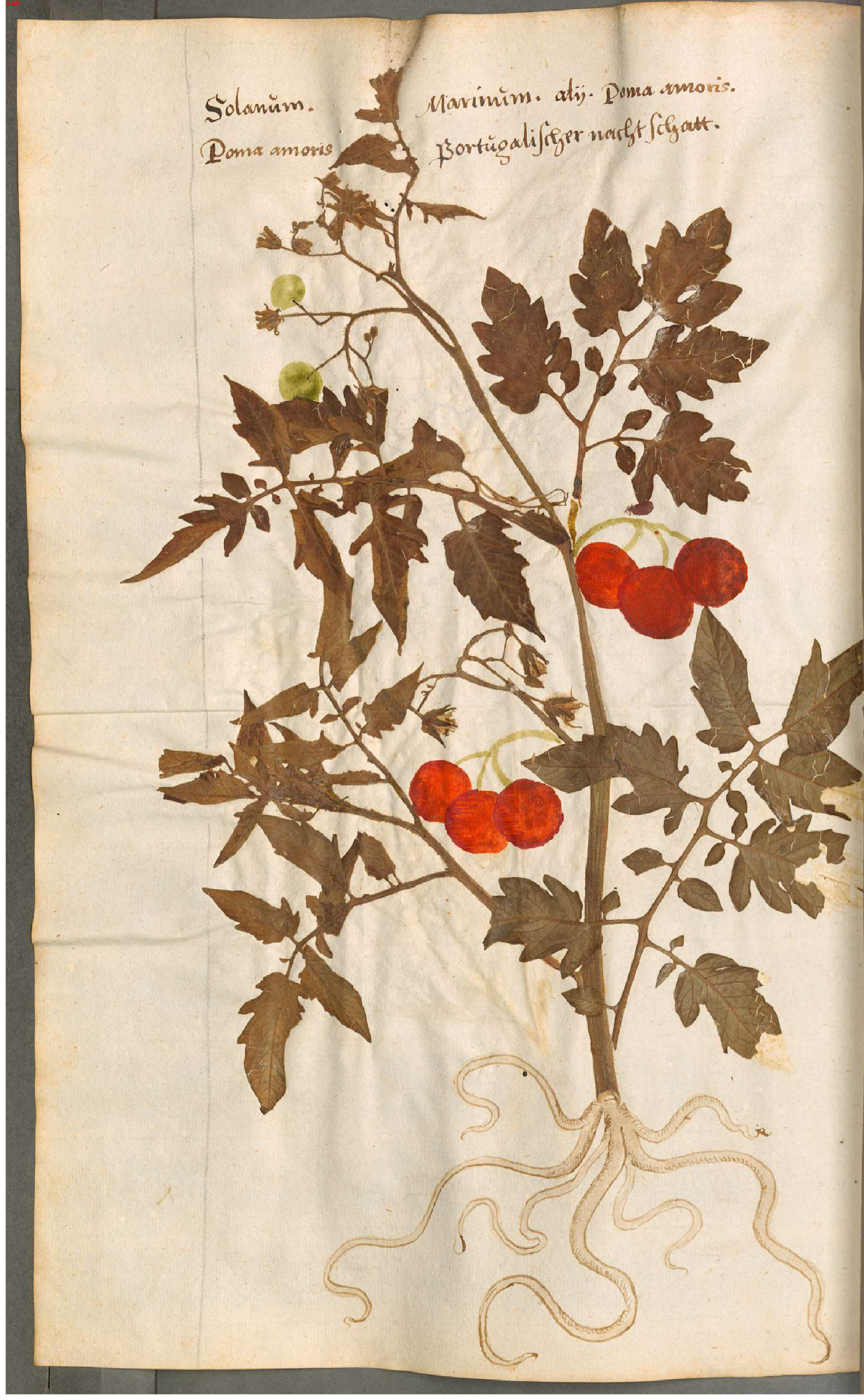
The discovery of a sixteenth-century tomato in the top collection of Naturalis elicited many different questions. Was this really the oldest preserved specimen of a tomato? Where did it come from? Could the DNA of this ‘wild ancestral tomato’ tell us something about the original taste and the resistance to pests and diseases, which has been lost in modern tomatoes?
Goldenapple
The oldest collection at Naturalis is the En Tibi book herbarium that was produced in about 1558 in Bologna, probably for the Holy Reman Emperor, Ferdinand I. It is a masterpiece of art and science. A herbarium is a book about and with plants: dried plants are stored in it, accompanied by a name and description. The tomato in the En Tibi is perfectly preserved. The maker seemed to realize that a flattened tomato in a book would rot quickly, and so he only took the skin of the fruit and draped it precisely according to the fruit’s round shape.
Researchers Tinde van Andel and Anastasia Stefanaki (Naturalis and Wageningen University & Research) had previously discovered that the ‘En Tibi specimen’ was not the oldest preserved tomato specimen. Francesco Petrollini, the maker of this herbarium, had previously practiced with his own study herbarium in about 1553, which is preserved today in Rome. This herbarium contains a far shoddier tomato plant with unripe fruits. For a long time, it was thought that the first tomatoes, which entered Italy in about 1540 after the conquest of Mexico by the Spaniards, were elongated, segmented, and gold in color. After all, that is how they were depicted, and they were called ‘pomo d’oro’: golden apple.

Mexicoor Peru?
With the digitalization of historical collections, a growing number of old drawings and herbarium specimens of tomatoes are coming to light. That is because many botanists suffered the misfortune that their work was never published and lay forgotten for centuries in hermetically sealed libraries and university collections because they were so vulnerable. Van Andel and Stefanaki compared these (digital) specimens and drawings and saw that the tomato entered Europe in many different colors, shapes, and sizes. They were planted as curiosities in botanical gardens in Italy, Germany, and Belgium. However, the sixteenth-century botanists did not agree about one thing: did this tomato plant originate from Mexico or from Peru?

Modern tomato experts are still trying to answer this question. Rutger Vos and Ewout Michels sought the answer in the highly degraded DNA of the En Tibi tomato. A mere 1.2% of the genome was readable, but this still revealed that the En Tibi tomato was definitely not a wild plant. Furthermore, it shows strong similarities with three traditional varieties from Mexico and two cherry tomatoes from Peru. The indigenous Andes population in Peru started domesticating a small wild cherry tomato. They brought this to Mexico, and there they developed the tomato with large fruit that we know today. If you want to know what the ‘En Tibi tomato’ tasted like or if it was more resilient to pests and diseases, the best thing to do would be to travel to Mexico and Peru. There, traditional farmers grow a wide range of tomatoes, and they could definitely use some support in protecting this unique genetic diversity.
Moreinformation
The article entitled 'Sixteenth-century tomatoes in Europe: who saw them, what they looked like, and where they came from' appeared in PeerJ.
For substantive questions, please contact Tinde van Andel, email: tinde.vanandel@naturalis.nl, telephone number: 06 28523329.
Text: Tinde van Andel and Anastasia Stefanaki, Naturalis Biodiversity Center & Wageningen UR (Biosystematics group).